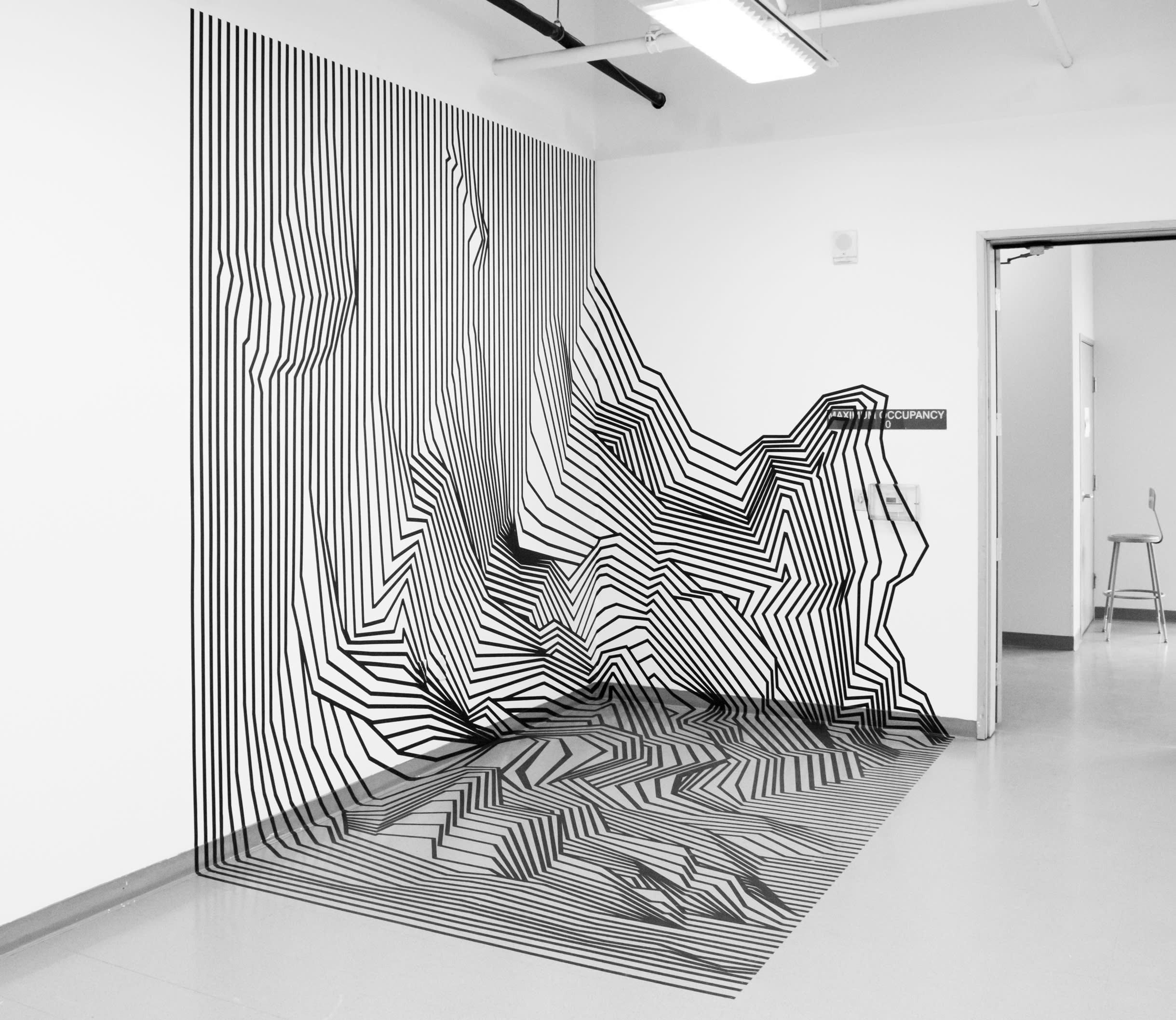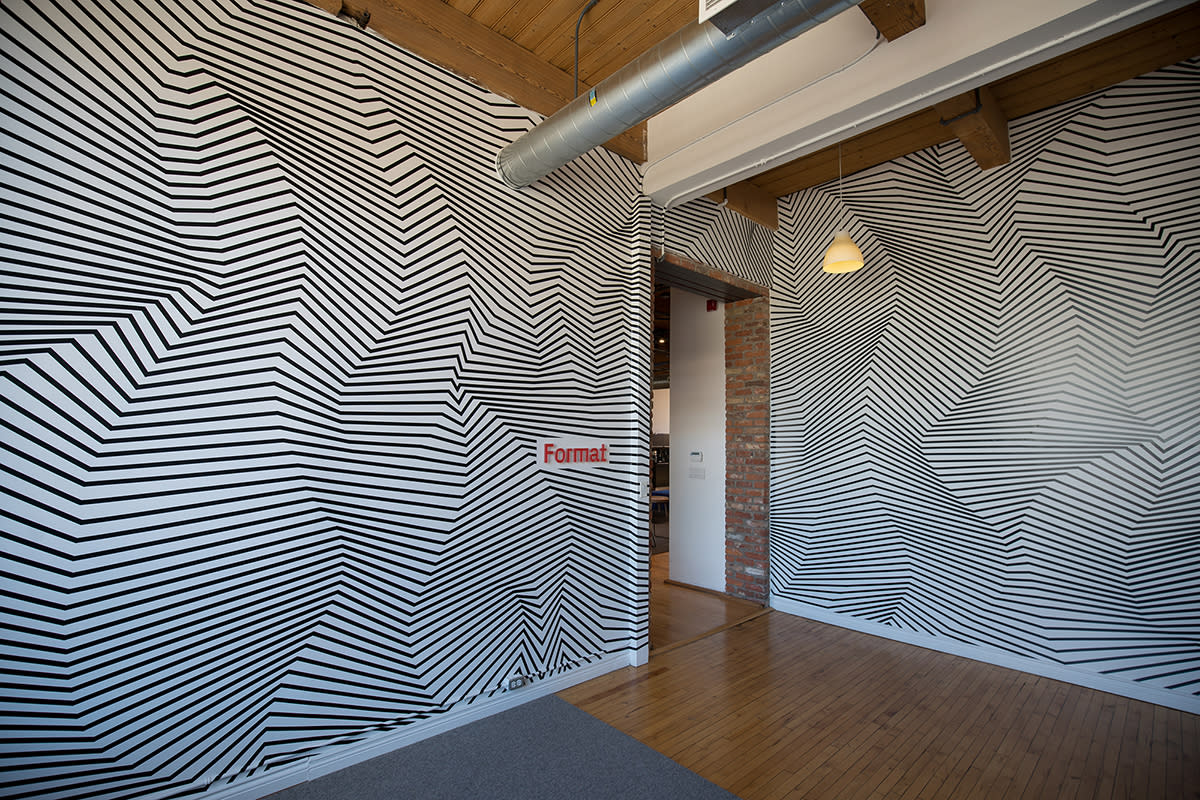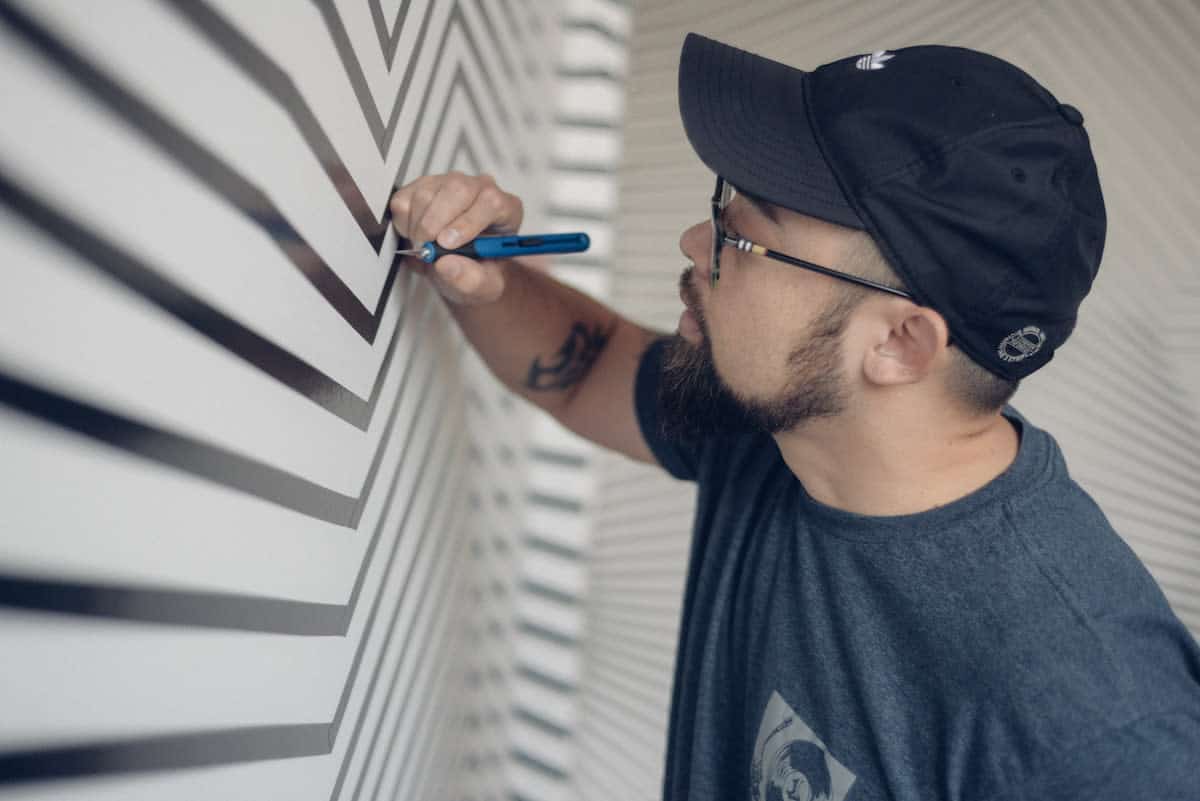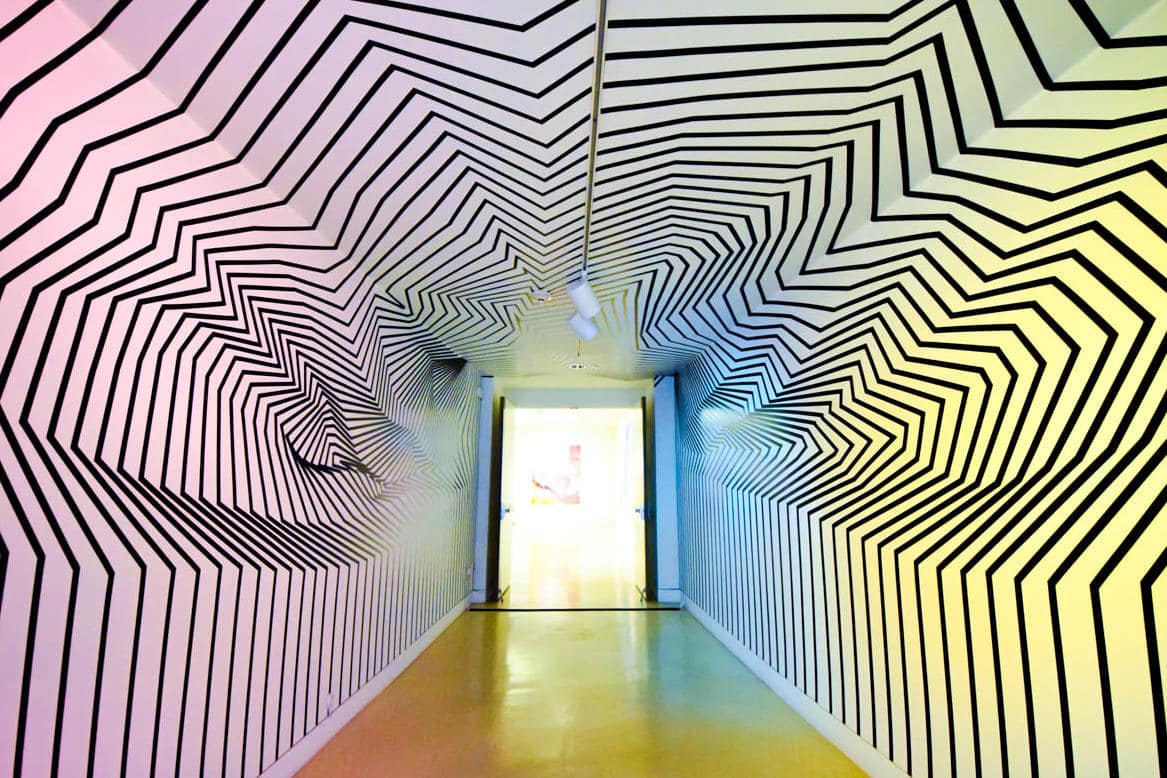L.A. artist Darel Carey is changing the way we look at space with a roll of electrical tape, a knife, and a ladder. Growing up in the California hip hop and breakdancing scene, graffiti was Carey’s creative outlet. However, he didn’t pursue art as a career until much later in life, serving as a language analyst in the US Air Force until 2012.
Now, Carey’s work focuses on visual and spatial perception, where he uses lines to shape and bend the perceived dimensions of a space. His site-specific tape art installations have lead to working with brands like Express, T-Mobile, and Adidas, as well as space in LA’s infamous Museum of Selfies.
We sat down with Carey during while he transformed the walls of our lobby in our Toronto office to talk about his process, transitioning from a military career, documenting temporary art, and playing with perception.
Format Magazine: When you go into a space, do you have any idea of where you want it to go?
Darel Carey: It depends what I’m doing, because if I’m given a space and told I can do what I want, then that’s when I can really make a decision in that sense. But in some cases, like this case, if the client wants something in particular, wants certain walls done, then I just go with that and run with it.
But, yeah, I do like to spend time—either way, I still like to go into the space, definitely before I start, whether it’s right before I start, like the day of, or it’s days before. I like to look at the space, sit in the space, and kind of meditate on it a little bit to see if any ideas come or just get used to the space, and kind of map out in a general way what I’m going to do.
Have any of your pieces changed drastically from the original vision to the end product?
I would say not drastically. There is a sense of control that I don’t have when I’m doing the pieces. So there are smaller, less drastic changes or differences that I either didn’t anticipate or didn’t foresee.
If you look at some of my pieces, they all look similar, but then they all look different as well. I kind of start off and then start following a certain rule when it comes to one line to the next, like guiding the direction of the lines, whether or not the lines are touching, what’s the closest thing to all the lines when I start a piece. So, for example, with this installation here, I’m making it so that none of the lines touch each other, whereas in other pieces they will touch each other. So that makes the piece, in the end, look different.

Installation by Carey at Inglewood Open Studios, Inglewood, CA (2017).
What does it feel like to work on art that is temporary? Rather than—like a lot of times with larger installations—artists know that they’re going to be there maybe not forever but for a very long time.
I used to not be okay with the idea, but the more I thought about it, and then when I started doing pieces, I’m actually okay with it, especially in an art sense. I’ve kind of got two separate tracks where I’m doing my art, how I do it, how I want to do it, and then I have another track of clients. So when it comes to my art, they all started temporary. And one thing I have though is documenting it, taking pictures of the piece.
If you think about the art context, like you’ve got art gallery or a new exhibition and you think of something like a performance piece, those aren’t something that’s going to stay for years. So I think about it in that way, like there’s just different art — people appreciate art differently for different reasons depending on the context.
And so one of the things that I started doing was time-lapsing pieces, and to me that’s how my piece will live on. But now it’s kind of transitioning slowly to that other track of the client base thought, of making them more permanent. Not years and years, but several years at this time. And then also I’m going to start painting as well as mix with the tape, as far as permanence goes.
I guess for me the short answer is the documentation with the time-lapse and pictures have the pieces live on in a way that I’m satisfied with.
Do you find it challenging to document? Because, like you were saying with the vantage point, with time-lapse you can only get a certain view of the piece.
That depends on the piece. The ones that have a specific vantage point, it’s usually one vantage point. And then there are other vantage points that come from that, so in that sense the time lapse only captures my original desired vantage point.
One thing I do is when it isn’t necessarily one specific vantage point—so if it is a specific vantage point, sometimes I’ll keep it in the same place, the camera. But if it’s not necessarily one vantage point, I’ll move the camera around. So I’ll take breaks and set the camera up in a different way, and then when I’m done I try to take pictures from different angles to document those different kinds of angles. But one thing about the installations is the video and pictures never do it the justice that it would for a person being in the space, experiencing it, walking around, because even just the movement and walking around it is something unique.
Which can be said, I think, about a lot of art. It’s not quite the same.
That is very true, yeah. And I think it’s very important with my work because my work speaks specifically to perception. It’s like how you perceive something and the way the lines affect your perception when you move around it. So to me it’s a very important aspect of it.
What do you want people to feel or experience when they view your installations?
Awe, wonder, and thought. What I like is the ability of my work to make you think about how you see things and reality and looking at things from different perspectives. So I like to make people think about perception, about reality.
See more of Darel Carey’s work at his website, built using Format. Below, find some photos of him at work in Format’s Toronto office.


Cover image: Site-specific installation Dimensionaliazation by Darel Carey at the Torrance Art Museum in Torrance, CA.
Further reading:
The Artist Behind the World’s Largest Ever Digitally Printed Image
The Club Photographer Shooting the Weird Side of Ibiza
Why This Photographer With Tunnel Vision Uses a 50mm Lens









